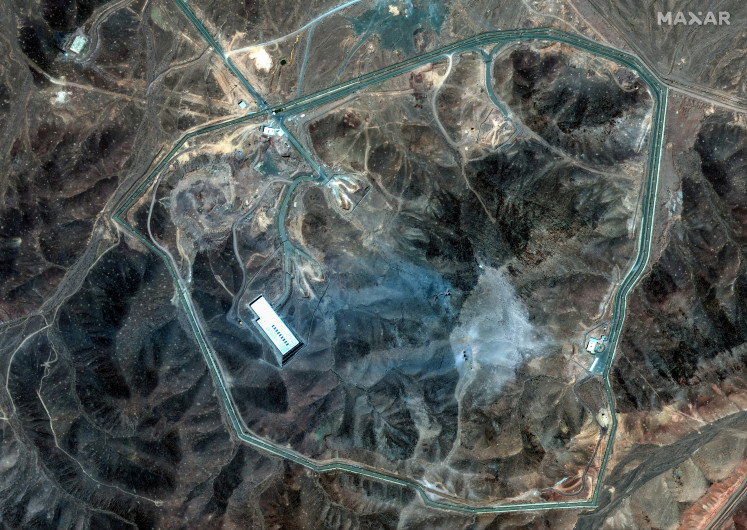Popular Reads
Top Results
Can't find what you're looking for?
View all search resultsPopular Reads
Top Results
Can't find what you're looking for?
View all search resultsImages: Is Any of These yours?
Leftovers: Empty snack packets and a bottle of milk that were found on Jimbaran Beach in Bali
Change text size
Gift Premium Articles
to Anyone

Leftovers: Empty snack packets and a bottle of milk that were found on Jimbaran Beach in Bali.
The sun is peeking over the horizon and the sounds of crashing waves greet early morning dwellers on trash-covered Kuta Beach.
Bali’s waste management problem is at its worst during the annual monsoon season, when strong winds push marine flotsam onto the beach.
During the season, the piles of rubbish washed up on the shore force the government and local communities to regularly organize large scale beach clean-ups using heavy machinery.
According to local media, 300 tons of plastic waste finds its way into Bali’s waters on a daily basis.
In November, the problem became so bad officials had to declare a “garbage emergency” along a 6-kilometer stretch of coastline that includes popular beaches like Jimbaran, Kuta and Seminyak.
According to an article in Mongabay, from March to October 2014, a team led by Dr. I Gede Hendrawan — a researcher from the Center of Remote Sensing and Ocean Sciences at Udayana University’s Faculty of Marine and Fisheries — conducted a survey along Kuta’s shoreline to find out what type of garbage had washed up on the shore.
Results showed the waste on Kuta Beach was predominantly plastic, with an average concentration of waste of 0.25 per square meter. This is equal to 75 percent of the total waste. The team also classified waste sources with methods developed by the Ocean Conservancy.
“From the type of garbage it can be classified that the source of waste on Kuta Beach comes from land activities reaching about 52 percent, sea activity around 14 percent and general activity — both land and sea — by 34 percent,” Hendrawan said.
Indonesia is one of nearly 40 countries that are part of UN Environment’s Clean Seas campaign, which aims to halt the tide of plastic polluting the oceans.
As part of its commitment, the government has pledged to reduce marine plastic waste by 70 percent by 2025. It plans to boost recycling services, curb the use of plastic bags, launch clean-up campaigns and raise public awareness.
— Photos by JP/Agung Parameswara













